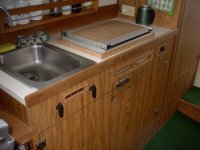Jeff and Julie
New member
I read through the Wallas topics and couldn't really find this one covered.
We have run our Wallas twice now. The first time it seemed to run fine, we only ran it maybe 40min.
Today, the stove would run for about 30 min and then the red light would start to blink. SHut the stove down, waited 10 min to restart and experienced same, about 30 min running. The manual (not much info) advises that this is an overheating signal but doesn't tell you what to check?? Has anyone else experienced this?
Also, is the countertop in front of the Wallas supposed to get hot to touch?
Thanks!!
Jeff and Julie
We have run our Wallas twice now. The first time it seemed to run fine, we only ran it maybe 40min.
Today, the stove would run for about 30 min and then the red light would start to blink. SHut the stove down, waited 10 min to restart and experienced same, about 30 min running. The manual (not much info) advises that this is an overheating signal but doesn't tell you what to check?? Has anyone else experienced this?
Also, is the countertop in front of the Wallas supposed to get hot to touch?
Thanks!!
Jeff and Julie

